The Lab Chronicles - Day 2, Liquid Nitrogen, Infrared and Failure
I started continuing my work on a project that may result in new filters to rid our water of estrogenic compounds. I will try to report every day about work that I have done in the lab. With this I am hoping to get people a better understanding of what being a laboratory scientist looks like.
The science of today, is the technology of tomorrow.
Edward Teller
Today was supposed to be an easy day. The expectations were not really high, all I wanted was to verify that the MUAM layer had formed on the gold substrates. This is something I had achieved three weeks ago. However, lets get to it.
Instrument Set-Up and Preparation
I was using an instrument called Attenuated Total Internal Reflection Infrared (ATR-IR) and something called External Reflection Infrared (ExR-IR). With ATR-IR the sample is placed onto a Germanium crystal (Ge crystal). An IR beam is send from the source through mirrors into the "black box" that is holding the Ge crystal (the very shiny circle in the middle).
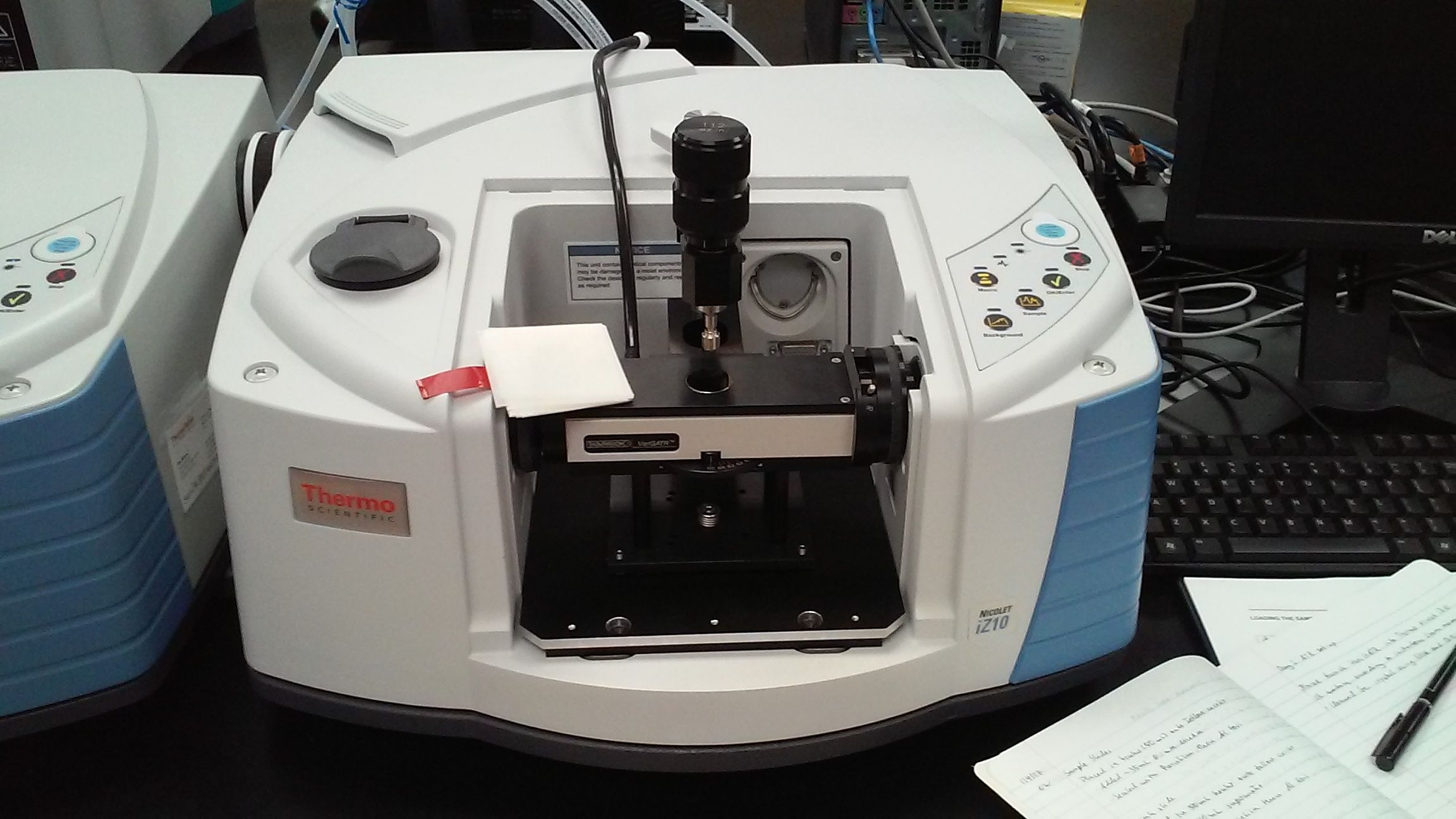
The beam in the "black box" is reflected back in forth, much like in fiber optics. The Ge crystal allows the IR beam to pass through onto the sample.
Here an electrical event happens (explaining this goes beyond the scope of my post), which causes absorption of certain portions of the beam. This can be measured by a detector. Which parts of the IR beam are being absorbed depends on certain chemical bonds in the sample, and thus helps identifying substances. The machine produces a spectrum, which can easily be read. My group knows what the absorbance spectrum of MUAM looks like, so I was able to compare the spectrum of today with the known spectra.
ExR-IR is different from ATR-IR in a sense that a beam is directed onto the sample without going through a fiberoptics part. ExR-IR is the go to technique because spectra are easily obtained and that the substrates can be more crude than in ATR-IR.
Both techniques were performed using the same machine. In order to perform ATR-IR I had to put in the module you see in the picture above. The Exr-IR used a simpler setup, which you can see below.
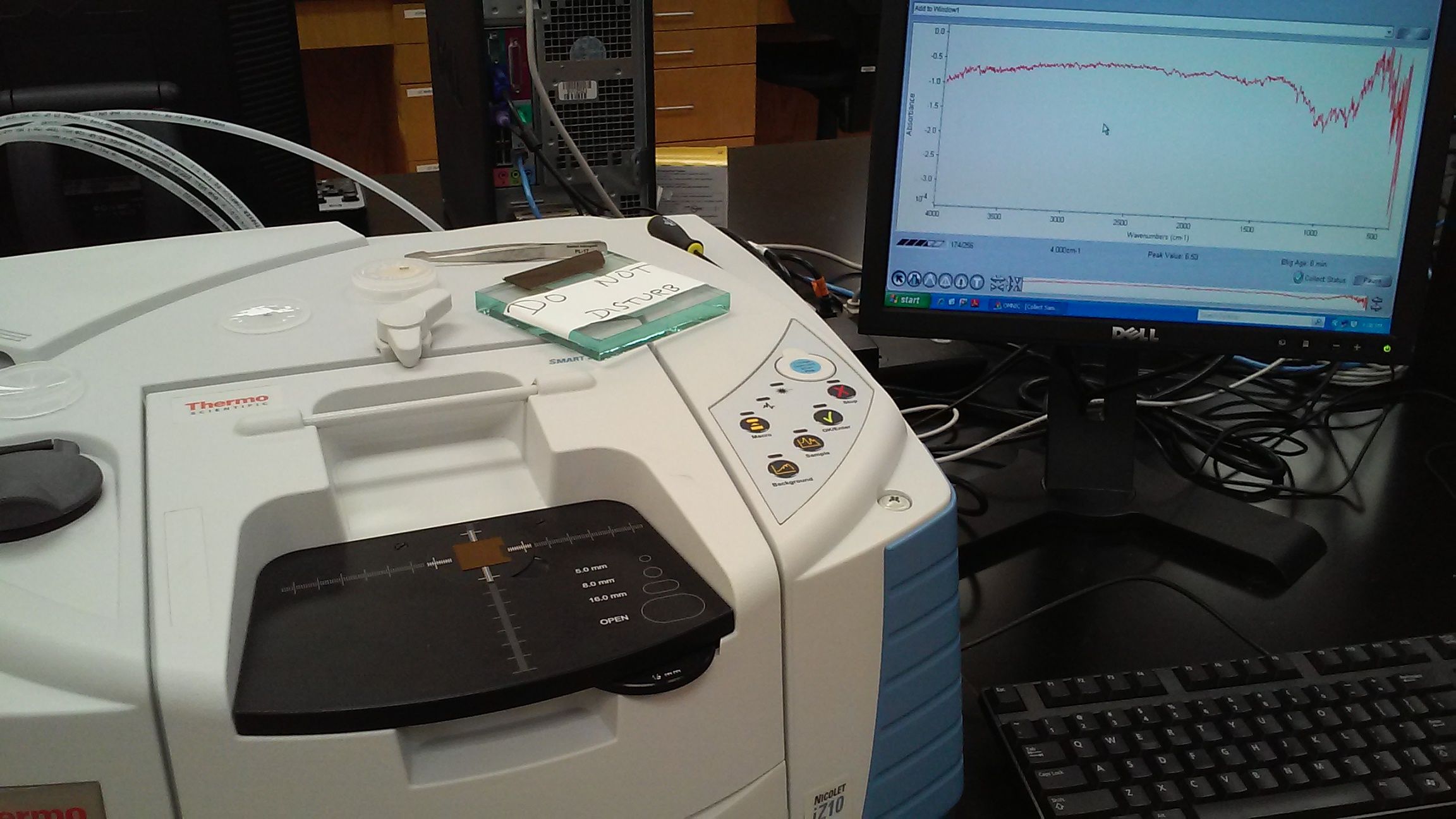
In order to use either module, the machine had to be cooled down. That was achieved by filling the machine with a coolant, and let it cool down for 30 minutes. The coolant I used was the famous liquid nitrogen. It is fun to handle since it boils like crazy at room temperature.
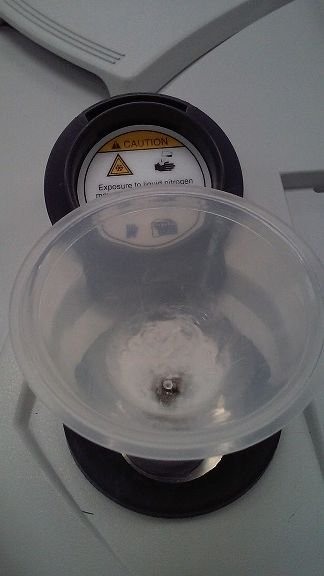
While the machine was cooling down, I had to prepare the sample slides.
Sample Preparation
The samples had to be rinsed in different solutions. The first was ammonium hydroxide, a substance that removes any unbound MUAM from the surface. The second was ethanol, the third 0.1 molar hydrochloric acid, then superfiltered water and ethanol. These solutions were supposed to remove any organic impurities from the sample slides, that could have interfered with the IR measurements.
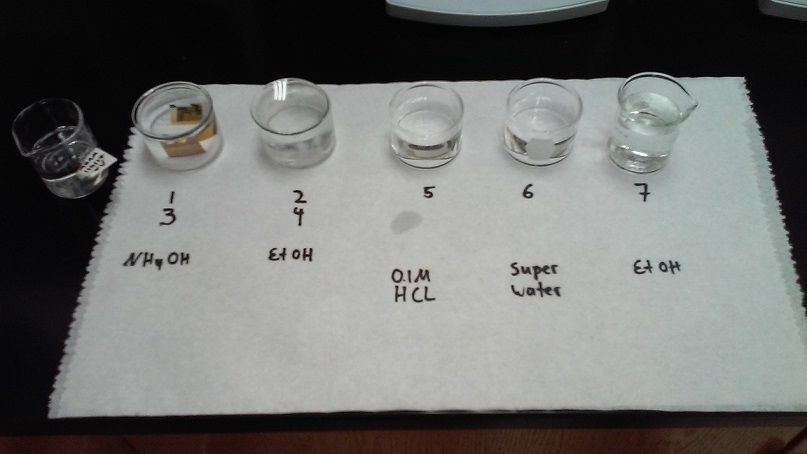
After rinsing the substrates, I dried them under an Argon stream. Once they were dry, I stored them in a special container.
I then ran the experiments. Sadly, I did not get any good results. Part of it was instrumental problems (this was the first time we used the ATR-IR module), part of it was unidentified mistakes in the procedure. There is also a good chance that the MUAM we used had gone bad. Whatever it is, we are searching for the issue and we will find and fix it.
I know this does not sound like a lot of work. However, it took me 8 hours to perform the above experiments. Laboratory work can be very tidious and time consuming. There is a lot of complex work involved and everything needs to be accounted for. In fact, I have to keep a laboratory notebook, in which I write everything I have done. Some of the materials are work with a very fragile. Like this little glass plate or the Ge crystal. The plate had to be pressed onto the Ge crystal, with just the right amount of force. Too much pressure, the glass breaks and may scratch the crystal (which means significant time and financial loses), too little and the measurement is not good enough.
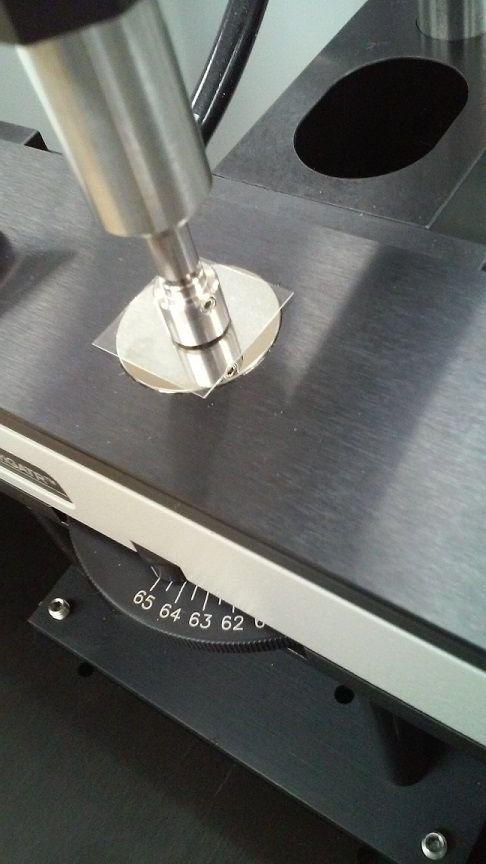
Thank you very much for reading my post! I really enjoy my work in the laboratory, however, I do understand that this is not for everyone.
If you liked this post, please upvote it and check our my channel. I am trying to give you a look behind the curtains.
Cheers @lesshorrible!
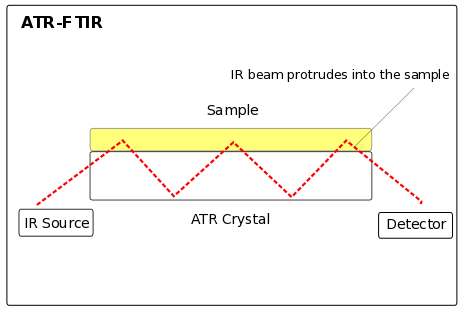
waaw i like this post so much, and that's good you have such instruments in laboratory, where i work we don't have much, thank you for the good informations, but i wish you posted the analys of the spectrum with details too. good luck bro
Thanks mate! Yeah, for such a small school we have some really nice equipment. I am not going to show much data because we are going to use this data for two papers that we hope to get published. Not that I am not trusting the Steemit community, but my supervisor and I would feel better knowing that only we see our data haha! I may write about ATR-IR in my instrumentation blog soon. Cheers!
aah okay i understand now, all my best wishes ;)
excellent post greetings already voted and done reesteem, I hope for your support friend
Thank you @joseferrer! I appreciate your support! I wish I had the mathematical skill you seem to have haha! Cheers!